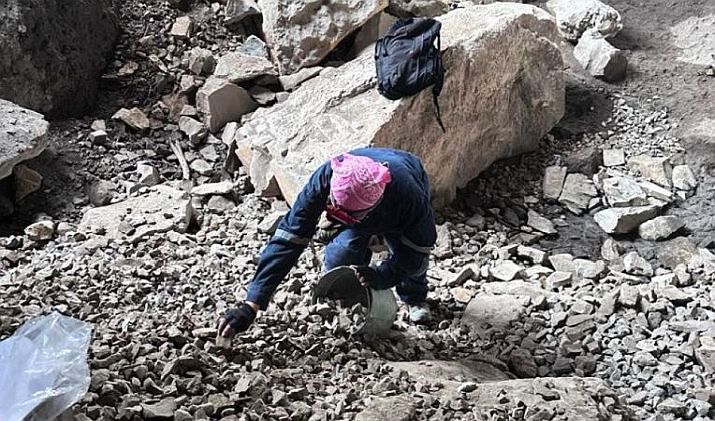
Nuevo León, México – Archaeologists in northeastern Mexico have unearthed a fascinating discovery: the 2,500-year-old remains of three individuals buried within a cave. The find, nestled in the state of Nuevo León, sheds light on the lives and funerary practices of the region’s Preclassic inhabitants.
According to Mexico’s National Institute of Anthropology and History (INAH), the skeletal remains belonged to two adolescents and a baby, their bones found amidst remnants of basketry, textiles, and fibers. This suggests they were wrapped in bundles for burial, a custom practiced by ancient cultures in the area. Further analysis is needed to determine the exact relationship between these individuals, but their proximity and shared burial layer hint at a possible shared demise.
The cave, known as La Morita II, has been a treasure trove for archaeologists since excavations began in 2003. Over 30,000 artifacts and ecofacts have been unearthed, including tools, utensils, and spearheads. These findings paint a vivid picture of the Preclassic lifestyle, characterized by long-distance trade, diverse food sources like hunting and gathering, and even crop cultivation.
The discovery of these ancient burials opens up exciting avenues for further research. Osteological and DNA studies could reveal more about the individuals’ lives and deaths, while analysis of the grave goods may provide insights into their societal roles and rituals.
“The human remains were discovered in the south chamber of the cave, 1.65 meters deep; It is likely that they have been dismembered and deposited expressly in that section of the cavity as part of a funerary practice,” explained archaeologist Moisés Valadez Moreno.
Funerary customs in northeastern Mexico during the Preclassic period often involved concealing burial sites and incorporating symbolic practices. Chronicles suggest infant sacrifices and burials were not uncommon, particularly in cases of twins, birth complications, or perceived weaknesses.
“The northeastern region of the country, rustic mausoleums were made in caves, caves or remote places, where the effort to hide the burial site is evident,” said Valadez Moreno.
The La Morita II cave continues to be a goldmine of information about the Preclassic period in Mexico. With each discovery, archaeologists gain a deeper understanding of the lives, rituals, and beliefs of these ancient people. As research progresses, we can expect even more captivating insights into this fascinating chapter of human history.





